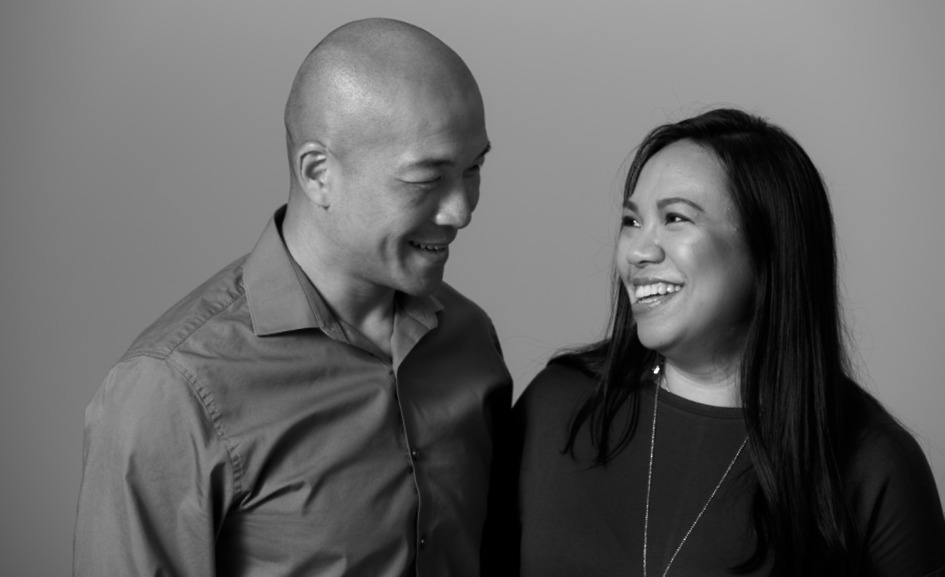This week, our blog features two special guests! The first is No Silver Bullet, a discussion group which Charco has been a big supporter of since early on. In this featured talk, NSB invite athlete and advocate Jimmy Choi to talk about his life experiences, and how his view of Parkinson’s has changed. This informative, emotive, and often surprising talk was surely not one to miss!
No Silver Bullet
‘My wife always tells me that when I’m talking to people onstage, if I get too nervous, to envision that you guys are all wearing your underwear – but since we’re doing this over Zoom, chances are that many of you are in your underwear!’ With this startling revelation, Jimmy Choi began his talk to our Zoom audience (fully-clothed, I might add), and through the next hour we covered Jimmy’s own incredible story, his life philosophy, and held a group discussion about life with Parkinson’s.
Jimmy’s talk, entitled ‘From Canes 2 World Records – A Talk by Jimmy Choi, a 19-year Parkinson’s Veteran’, was hosted by No Silver Bullet, an innovative group for people with Parkinson’s. NSB came together after some original members attended a tutorial on the benefits of nutrition on Parkinson’s. They quickly realised that, despite all having the same diagnosis, their experience of Parkinson’s was often vastly different. Factors such as nutrition, exercise, and supplements affected each of them in diverse and unexpected ways.
Realising the need for a forum to discuss these topics and provide support, they created their own group. A place to chat, share experience, ask questions, and contribute wherever possible. They named their group No Silver Bullet, after the belief which brought them together: that everyone’s experience is unique. There is no quick fix fix for Parkinson’s, and no one answer to every question. Indeed, in this interview with Charco, founding member Mark discusses the need for a ‘holistic approach to Parkinson’s’, and how his own relationship with his condition has changed in the years since being diagnosed.

Jimmy’s Story
Knowing how they were founded, NSB choosing Jimmy as a guest speaker should not be surprising. Jimmy, an elite athlete and Parkinson’s campaigner who has previously featured in his own Charco Blog, has a story more astonishing than most. Jimmy was first diagnosed with Parkinson’s nineteen years ago, at the age of twenty-seven. This was a completely unexpected discovery: Jimmy would not have even sought a diagnosis if it weren’t for the advice of a nurse, whom he saw for a completely unrelated procedure.
‘It was actually’, Jimmy recalls, ‘a life insurance policy; I bought life insurance as soon as I got married, based on the advice of my parents, and the nurse that came and did my life insurance physical was taking notice of the way that I was moving’.
Upon her suggestion, Jimmy saw a doctor, ‘and sure enough, after months and months, and countless visits to doctors, neurologists, specialists… I found myself sitting, really sitting in disbelief in my doctor’s office, when I was finally told: Jimmy, you have Parkinson’s’.
By his own admission, Jimmy lived in denial of this moment for the next eight years. ‘I did absolutely nothing […] I didn’t even open the pamphlet which I was given when I was diagnosed.’ Taking his medication allowed Jimmy to live life as usual, for a while at least; but there came a point where it became impossible to ignore. ‘My symptoms progressed, people noticed, and one by one, it became harder and harder to hide my symptoms.’
These pressures understandably led to a deterioration in Jimmy’s quality of life. ‘Before I knew it, I was walking with a cane […] frustration began to set in, and frustration led to depression, which led to anger’. This image is in stark contrast to the person speaking today; Jimmy’s positivity is infectious, even over Zoom! So, how did it all change? An accident gave him a pivotal wake-up call: he tripped, whilst holding his son, and fell down the stairs. Although there was no serious injury, for Jimmy it changed everything. ‘I knew that I couldn’t change the fact that I had Parkinson’s, but I could change the way that I lived with it.’
 Jimmy Competing
Jimmy Competing
One More Everyday
How, then, did Jimmy change the way that he lived with Parkinson’s? One thing was top of the list: ‘exercise: exercise, exercise, exercise.’ First, he started exercising at a level he could manage. ‘I walked around the block, with my cane, until I became more comfortable and confident in the way that I moved.’ Once he had persevered with this, he began to leave his cane at home, and walk as far as he safely could. Gradually, walking became jogging, which in turn became running; ‘pretty soon, those blocks added up to a mile. The more I ran, the better I felt.’
Fast forward over the past decade, and Jimmy’s dedication has led to some truly jaw-dropping feats of endurance. Among Jimmy’s accomplishments are ‘one ultra-marathon (that’s a 50-mile marathon), 16 marathons, 105 half-marathons, countless 5K’s, 10K’s. I was the first person with Parkinson’s to complete a 100-mile bike ride in under 5 hours; I competed in American Ninja Warrior four times, four years in a row’. As if this wasn’t enough, in the past six months, Jimmy has managed to break two world records. ‘One is an official burpee world record, for chest-to-ground burpees; and the second is a push-up world record for plyometric, lateral-side push-ups.’ He has also dedicated himself to fundraising: ‘my wife and I have helped raise more than $500’000 for Parkinson’s research’. Jimmy believes that all these amazing achievements can be traced back to a single principle, a question which he asks himself everyday: ‘what did I do today, that is more than yesterday?’ Whether this be ‘one more step when I’m walking, or running, or doing one more rep in the gym, what is it that I’m doing more today than yesterday?’ Jimmy credits these “one-more-everydays” with enabling him to reach the incredible level which he has attained today.

At this point in the talk, Jimmy suddenly produces a phonebook. For the benefit of millennials unaware that such a thing existed, he helpfully introduces it as ‘the Google of the 20th Century’. It quickly becomes clear that Jimmy intends to use it as a visual demonstration of his “one-more-everyday” philosophy. ‘This represents an obstacle that life may throw at you: the only way to get through this obstacle is to rip through this phonebook to get to the other side’.
Jimmy begins to tear through the book, beginning with the first page, then tearing two at a time, then three; as he does so, he begins to tell a story:
‘In 2015, just after I’d finished the Chicago marathon – I ran my fastest marathon ever, at 3 hours 40-something minutes – at the charity event afterwards, this elite marathon runner came up to me, and he said, “congratulations on your finish Jimmy! What was your time?”
I felt pretty silly, because this guy had just run the marathon in a little over 2 hours! He ran almost twice as fast as I did. So when I responded, I said, “oh, you know, just 3 hours and 45 minutes”.
But his response was shocking to me. He said, “Wow, that’s incredible!”
Now I was thinking to myself, why would a person who can run a marathon twice as fast as I can tell me that what I’ve done is impressive? Well, what he told me really changed my perspective forever. He said, “as far as I’m concerned, Jimmy, you’re more fit than I am”.
“What! Are you kidding me?”
“No. I can run a marathon in 2 hours and 14 minutes, but I could never imagine running non-stop for four hours.”
And, by that comparison, I am more fit than he is, because there’s no way he can run for that long of a time.’
As he finishes this anecdote, Jimmy also nears the end of the phonebook, having torn through the entire thing in steady increments.
‘We are doing a little bit more each day: and one page becomes two, two becomes three, three becomes five, and five becomes ten. You keep adding to those, and maybe you stop at fifty pages and that’s all you can rip.’ Jimmy now holds up a fresh phonebook, grabbing the whole thing in one thick wedge.
‘Maybe, one day, we can get to 945 pages all at the same time.’
With this he rips the phonebook, in its entirety, clean in half.
Now that was unexpected.

Everyone is Unique
Of the many topics which Jimmy’s talk covered, the importance of one clearly shines through: that everyone is unique. This, too, is what No Silver Bullet has done so well in recognising. However someone manages their Parkinson’s symptoms, they need it to work for them. Treatment grows from individual needs and circumstances, and not the other way round.
In the larger NSB discussion following Jimmy’s talk, it was revealing to hear of each person’s varying approach to their condition. As Jimmy noted during his talk, educating yourself is key. ‘The more I learned’, he tells us, ‘the more in control I felt’. Crucially, this doesn’t just mean learning what Parkinson’s means as a diagnosis: it means learning about what a diagnosis means for you.
For many, this means keeping track of how your symptoms change over the course of a day, and how different medications, exercises, and nutritional factors affect your symptoms. For Jimmy, recording this information proved extremely beneficial:
‘Keeping track of all this information painted a lot of pictures for me. It painted me a picture of how to take my medication depending on the activities I’m doing, and how to take my medication depending on the foods that I am eating.’
There is one thing, however, which has been proven to advantage anyone with Parkinson’s: exercise. For Jimmy, learning how exercise affects your symptoms is the first, crucial step. As he started to push himself regularly, he learnt ‘how exercise helps me manage my on-and-off periods with my medication. I’m learning how to optimise the dosing of my medication […] I’m learning something about myself: that I am stronger than I ever thought I could be.’
As studies and clinical trials, such as ‘Effect of High-Intensity Treadmill Exercise on Motor Symptoms in Patients With De Novo Parkinson Disease (2018)’, have shown, it may not be the type of physical activity which matters, so much as the intensity of the exercise. As Jimmy explains, ‘today, we know that high-intensity exercise is the only treatment proven to slow, or even hold progression of Parkinson’s patients’. Whether you prefer skills-based exercises (such as running or swimming) or non-skills-based exercises (such as burpees or push-ups), what truly matters is reaching a high-intensity state. This high-intensity state, being different depending upon the person, is defined by heightening your heart rate to a certain level. Though there may be small variances in where people place this figure, it’s generally agreed to be 60-85% of an individual’s maximum heart-rate. Of course, this is different for every person. Luckily, most gyms can now conduct a test to find out what your maximum heart-rate will be :)
Thank You!
We hope you enjoyed reading about Jimmy’s talk as much as we enjoyed watching it! Thank you once again to Jimmy, and to No Silver Bullet for hosting such an engaging discussion. If you are a person with or around Parkinson’s, and would like to learn more about No Silver Bullet, please contact [email protected] to receive an invitation :)
Also, please watch out for Jimmy’s appearance in an upcoming Charco blog, focusing on his recent experiences with accessibility, design, and the internet community :)